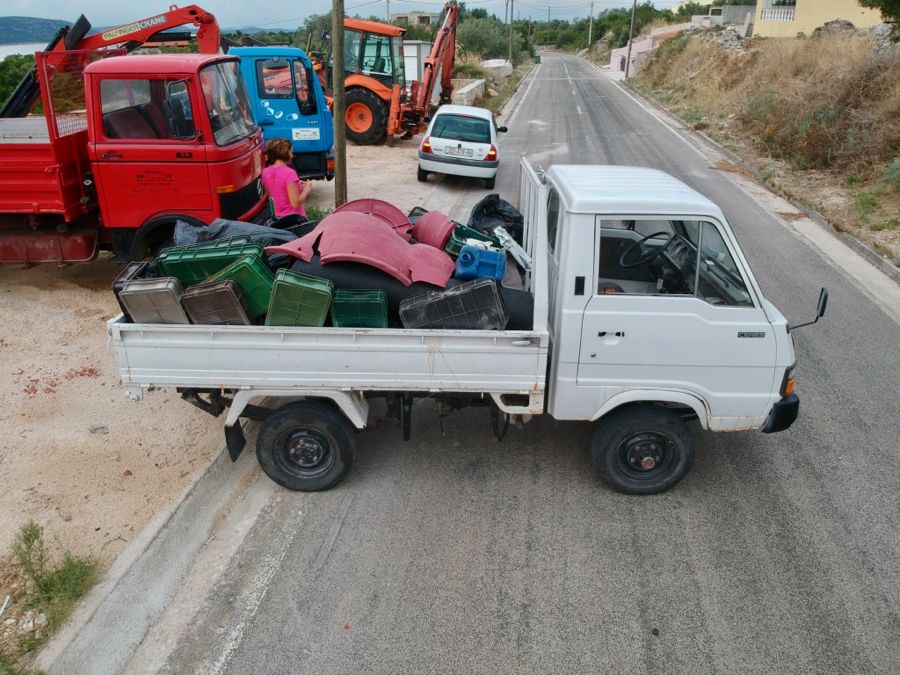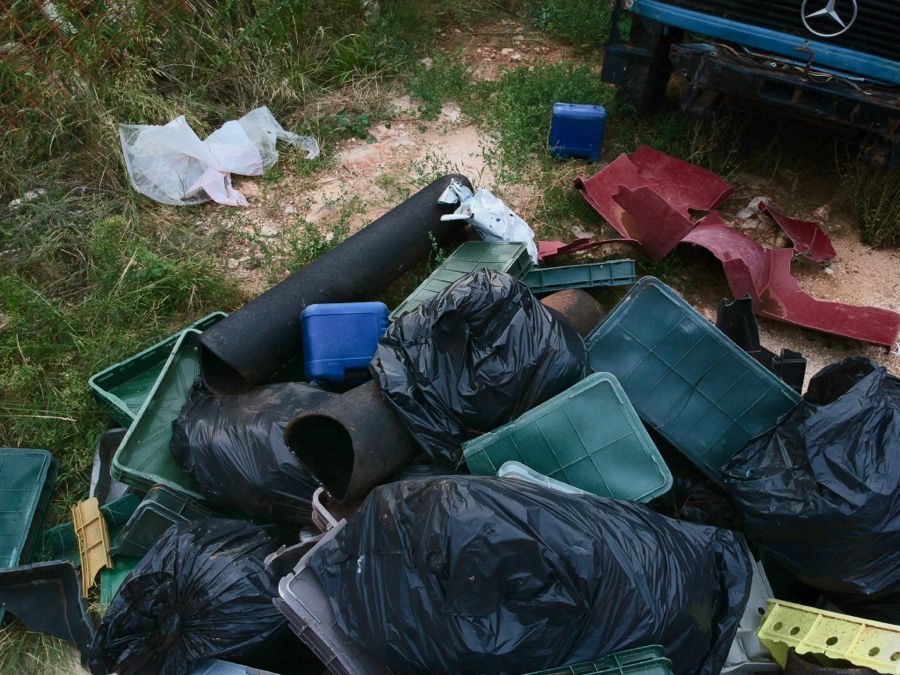September 17, 2018 — It was supposed to be a relatively harmless study. Select a 100-meter stretch of shoreline, clean it up and document the various items found.
The early results suggest a problem far grander than plastic bottle caps and grocery bags.
I dug my fingers into the crevice between two rocks and yanked at a fluorescent green nylon rope. Didn’t budge.
I shoved aside a couple of larger stones then pulled again, freeing up a small length. I tugged again. More rope. And with every subsequent pull came another length.
I briefly thought I may have found the one strand which, if pulled entirely, would unravel the entire planet like a cheap sweater
The most disturbing part: an utter lack of surprise. Every late-spring and early summer, my wife Tina and I scavenge the shoreline of a W-shaped cove called Vodenjak, where my better half runs an anchorage every summer. We remove the random assortment of garbage — for the guests, but mostly for ourselves.
The sheer breadth of the random detritus washed onto the coast reads like a random list of floatable items. A wayward flip flop here. The sole of an Adidas sneaker there. Spongey padding from a bathing suit (or bra). Medicine bottles — not always empty. Sunscreen tubes and motor oil jugs. Syringes.
And bottles — water bottles, Coke bottles, shampoo bottles. The sheer volume of human detritus accumulating on the small shores of my home island — an admittedly small sampling in comparison to the vast outlines of the world’s continents — suggests something’s amiss.
The seas are awash in garbage. Yes, admittedly old news. Studies suggest less than half of Croatia’s plastics were recycled, according to the World Wildlife Foundation.
Greenpeace recently had a cleaning day at the Telašćica Nature Park on Dugi Otok, in an inlet called Kobiljak. They then released a “Top 5” list of the most common brands found in the rubbish. Croatian water brand Jamnica/Jana had the dubious honor of outnumbering Coca Cola.
The group hoped to raise awareness of pollution, while also putting the onus on companies to use fewer plastics in their products.
Tina wanted to know exactly how much can accumulate on a single stretch of coastline in the span of a year, to quantify the problem with data (she’s also submitting this as an assignment in her university).
She adopted a 100-meter stretch of the shore in Vodenjak to clean in fine detail, with no scrap left uncollected. Then counting, measuring and weighing the random crap that washed along the shore.
To see how deep the nylon rope really goes. To quantify how screwed we are.
The collecting began in mid-June and lasted until July 15, mirroring last year’s garbage collection.
By the time we returned a month later to retrieve the rubbish, the large black bags used to collect the trash had themselves disintegrated into little shreds. We’d inadvertently become part of the problem.
The sheer quantity of trash can be hard to describe verbally; here’s a photo of the pick-up truck's worth we brought back:

The process of categorizing, sorting, counting and weighing the various items continues. It will for some time. But an early glance seems to suggest the biggest polluters aren’t inconsiderate tourists or nautical adventurers. Tina’s concluded the Adriatic's biggest enemy may be the very people who make a living off the sea.
Most of the large-scale garbage came from fishermen: many, many plastic crates used to store fish; large chunks of styrofoam; large plastic tubes used in farm fishing; and a large plastic container used to store nets or ice.
Also, a blow-up sex doll, complete with various faux orifices for whatever carnal pleasure you’re lacking. We admittiedly can’t confirm it belonged to fishermen.

The rest of the detritus so far includes the expected: grocery bags, cotton swabs, pens, bottles, caps, random bits of footwear — never a complete pair. There was even a bottle of Vick’s Vaporub, with the pungent gel still inside.
Even after years of collecting, we were taken aback by the sheer scope of our find.
“People are garbage and we will drown in our own garbage,” Tina said, when asked for an early assessment of her collection.


